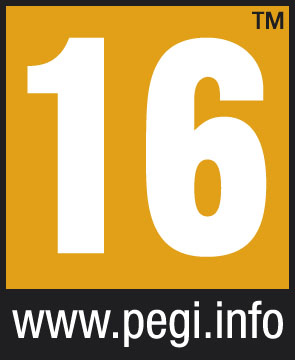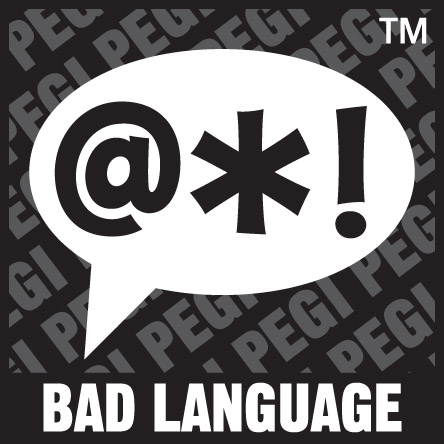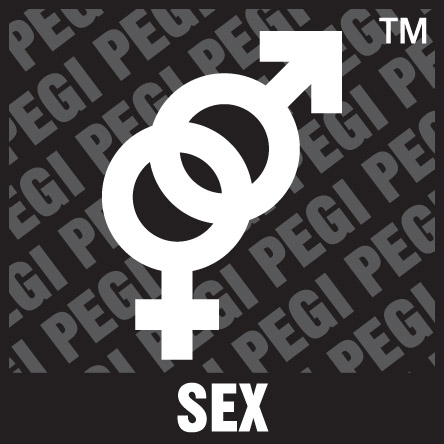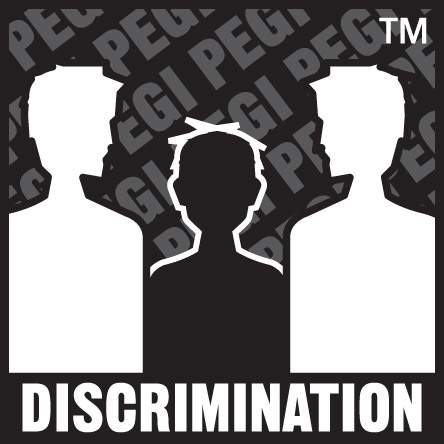Ashton Parker
Saturday, 23 June 2018
Monday, 26 March 2018
PEGI RESEARCH
The PEGI Organization
The Pan-European Game Information age rating system was established to help European parents make informed decisions on buying computer games. It was launched in the Spring of 2003 and replaced a number of national age rating systems with a single system now used throughout most of Europe, in more than 35 countries, for example: Albania, Belgium, Czech Republic, Denmark, Estonia, France, Greece, Hungary, Ireland, Lithuania, Montenegro, the Netherlands, Slovakia, Portugal, Romania, Spain, and the UK.
The system is supported by the major console manufacturers, including Sony, Microsoft and Nintendo, as well as by publishers and developers of interactive games throughout Europe. The age rating system was developed by the Interactive Software Federation of Europe.
The day-to-day management, supervision and development of the PEGI system was handed to PEGI - an independent, not-for-profit company with a social purpose established under Belgian law.
PEGI Age Ratings
Age ratings are systems used to ensure that entertainment content, such as games, but also films, tv shows or mobile apps, is clearly labelled with a minimum age recommendation based on the content they have. These age ratings provide guidance to consumers, parents in particular, to help them decide whether or not to buy a particular product for a child.
Video games are enjoyed by a very diverse group of players throughout Europe. Both children and adults, men and women, play games regularly, either on a dedicated game console, a personal computer, or a mobile device like a smartphone or a tablet.
While most games are suitable for players of all ages, others are only suitable for older children and young teenagers. A specific portion of games on the market contain content that is only appropriate for an adult audience.
The PEGI rating considers the age suitability of a game, not the level of difficulty. A PEGI 3 game will not contain any inappropriate content, but can sometimes be too difficult to master for younger children. Reversely, there are PEGI 18 games that are very easy to play, yet they contain elements that make them inappropriate for a younger audience.
PEGI is used and recognized throughout Europe and has the enthusiastic support of the European Commission. It is considered as a model of European harmonization in the field of the protection of children.
PEGI Age Labels
 |
The content of games with a PEGI 3 rating is considered suitable for all age groups. The game should not contain any sounds or pictures that are likely to frighten young children. A very mild form of violence (in a comical context or a childlike setting) is acceptable. No bad language should be heard.

Game content with scenes or sounds that can possibly frightening to younger children should fall in this category. Very mild forms of violence (implied, non-detailed, or non-realistic violence) are acceptable for a game with a PEGI 7 rating.
|
 
This rating is applied once the depiction of violence (or sexual activity) reaches a stage that looks the same as would be expected in real life. The use of bad language in games with a PEGI 16 rating can be more extreme, while games of chance, and the use of tobacco, alcohol or illegal drugs can also be present.

The adult classification is applied when the level of violence reaches a stage where it becomes a depiction of gross violence, apparently motiveless killing, or violence towards defenseless characters. The glamorization of the use of illegal drugs and explicit sexual activity should also fall into this age category.
|
The PEGI Content Descriptors
Violence: The game contains depictions of violence. In games rated PEGI 7 this can only be non-realistic or non-detailed violence. Games rated PEGI 12 can include violence in a fantasy environmental non-realistic violence towards human-like characters, whereas games rated PEGI 16 or 18 have increasingly more realistic-looking violence.
Bad Language: The game contains bad language. This descriptor can be found on games with a PEGI 12 (mild swearing), PEGI 16 (e.g. sexual expletives or blasphemy) or PEGI 18 rating (e.g. sexual expletives or blasphemy).
Fear: This descriptor may appear on games with a PEGI 7 if it contains pictures or sounds that may be frightening or scary to young children, or on PEGI 12 games with horrific sounds or horror effects (but without any violent content).
Gambling: The game contains elements that encourage or teach gambling. These simulations of gambling refer to games of chance that are normally carried out in casinos or gambling halls. Games with this sort of content are PEGI 12, PEGI 16 or PEGI 18.
Sex: This content descriptor can accompany a PEGI 12 rating if the game includes sexual posturing or innuendo, a PEGI 16 rating if there is erotic nudity or sexual intercourse without visible genitals or a PEGI 18 rating if there is explicit sexual activity in the game. Depictions of nudity in a non-sexual content do not require a specific age rating, and this descriptor would not be necessary.
Drugs: The game refers to or depicts the use of illegal drugs, alcohol or tobacco. Games with this content descriptor are always PEGI 16 or PEGI 18.
Discrimination: The game contains depictions of ethnic, religious, nationalistic or other stereotypes likely to encourage hatred. This content is always restricted to a PEGI 18 rating (and likely to infringe national criminal laws).
How Does PEGI Rate Games?
PEGI uses a single set of criteria to determine the age rating of a video game, but it has two different rating procedures that are adapted to the needs of different business models:
Using the traditional method of pre-release verification:
1) All the games on disc for Microsoft Xbox consoles.
2) All the games (download and boxed) for Sony PlayStation consoles and Sony PlayStation VITA.
3) All the games on disc or cartridge for Nintendo Wii U and Nintendo 3DS.
4) Most PC games (download and boxed)
Many console and PC games are still released as a physical product and sold via retailers. To ensure that these games always display the correct age classification on the box, a robust procedure is crucial:
1) Prior to release, publishers fill in a content assessment form for every version of their product. This questionnaire enquires about the content of the product, looking at the possible presence of violence, sex, bad language and other audiovisual content that may be considered as not appropriate for all ages.
2) Based on the responses from the publisher, PEGI's online rating system automatically determines a provisional age rating with content descriptors.
3) The PEGI administrators receive the game from the publisher and thoroughly review the provisional age rating. NICAM takes care of the games rated 3 and 7, whereas the VSC RATING BOARD reviews the 12, 16 and 18 ratings.
4) Depending on the review, the administrators approve or alter the provisional rating, and PEGI delivers a license to the publisher for the use of the age rating icon and the relevant content descriptor(s).
5) The publisher is now authorized to reproduce the appropriate age rating logo and content descriptor(s) on the packaging or at the digital point of sale in accordance with the PEGI Labelling Guidelines and the PEGI Code of Conduct.
This traditional method is not at all practicable for purely digital storefronts that see thousands of new products enter the market (and even more products updated or changed) on a daily basis. A faster, more scalable solution, with the possibility of responding quickly to changes or errors, was found in IARC:
Using post-release verification for digital products:

The IARC system is currently used for:
- All games and apps on Google Play (for Android devices, since Spring 2015)
- All games and apps on the Microsoft Windows Store (for Windows PCs, smartphones and tablets, since December 2015)
- All games and apps on the Nintendo eShop (since December 2015)
- All games and apps on the Oculus VR Store (since January 2017)
Thousands of new games and apps are released every day on digital storefronts for smartphones, tablets, PCs or consoles. IARC a coalition of rating authorities from Europe, Australia, Brazil, North America, and South Korea, aims to provide a solution for this globalized market of digital games (downloads, apps as well as browser-based games).
Instead of having to administer their own rating systems, storefronts and platforms can use the established standards while complying with content classification requirements that are legally mandated in certain countries. Developers are relieved of having to go through multiple processes to obtain ratings for the different territories and storefronts. And consumers are presented with a consistently applied set of familiar and trusted ratings that reflect their local, distinct sensibilities about content and age appropriateness.
In terms of methodology, IARC is designed as a more flexible and tailor made procedure that can cope with the large numbers of new apps and app updates:
1. A publisher submits a game or app to a storefront for a digital release. As an integral part of that submission procedure, the publisher has to fill in the IARC questionnaire, which is a single set of questions about a product’s content and interactive elements. The questionnaire combines the classification criteria of the participating rating boards.
2. Upon completion of the questionnaire, the publisher immediately receives a license with age ratings of the participating rating boards. The classification process is cost-free. As soon as the game or app is released, the appropriate age rating is displayed in the storefront.
3. Administrators from IARC rating boards work together to check a robust cross-section of all classifications. A variety of tactics, including keyword search, top download checks, publisher and consumer requests, and others, are applied to ensure that age ratings are correctly applied. In case of an error, the incorrect age rating can be changed very quickly.
Statistics about PEGI
Included in these statistics are all the PEGI ratings that were issued using the classic PEGI pre-release rating procedure, which applies:
- to all games released on disc or cartridge for Microsoft, Nintendo and Sony consoles, and PC.
- to all games released digitally for Microsoft and Sony devices (including smartphones and tablets).
- to many games released digitally for PC.
Digitally downloadable games that are available in Nintendo eShop also have a PEGI rating, but they are classified using the IARC SYSTEM, as are all the games and apps of the Google Play store for Android devices. Those age classifications are not included in the statistics below.
1. Number of products rated, by age category until end of 2016
Age Class
|
2016
|
%
|
Since 2003
|
%
|
3
|
372
|
21%
|
11090
|
40,2%
|
7
|
405
|
23%
|
4422
|
16%
|
12
|
498
|
28%
|
6616
|
24%
|
16
|
306
|
17%
|
3524
|
12,7%
|
18
|
197
|
11%
|
1963
|
7,1%
|
Total
|
1778
|
100%
|
27615
|
100%
|
2. Number of products per content descriptor
Platform
|
3
|
7
|
12
|
16
|
18
|
Total
|
Violence
|
377
|
363
|
262
|
197
|
1199
| |
Bad Language
|
285
|
90
|
133
|
508
| ||
Fear/Horror
|
120
|
38
|
158
| |||
Sex
|
64
|
13
|
8
|
85
| ||
Drugs/Alcohol
|
11
|
2
|
13
| |||
Gambling
|
14
|
2
|
10
|
26
| ||
Discrimination
|
0
|
THE PEGI CODE OF CONDUCT
The PEGI System is based on a Code of Conduct - a set of rules to which every publisher using the PEGI system is contractually committed. The Code deals with age labelling, promotion and marketing and reflects the video games industry’s commitment to provide information to the public in a responsible manner.
PEGI'S ADVICE
PARENT CONTROL TOOLS
All gaming consoles, handheld devices and operating systems for PC and Mac are equipped with parental control systems, allowing parents to protect their children's privacy and online safety according to various parameters. With these control tools, parents can:
- select which games children are allowed to play (based on the PEGI age ratings)
- control and monitor the use of digital purchases
- limit access to internet browsing by applying a filter
- control the amount of time that children can spend playing games
- control the level of online interaction (chat) and exchange of data (text messages, user-generated content)
- select which games children are allowed to play (based on the PEGI age ratings)
- control and monitor the use of digital purchases
- limit access to internet browsing by applying a filter
- control the amount of time that children can spend playing games
- control the level of online interaction (chat) and exchange of data (text messages, user-generated content)
CONSOLES
MICROSOFT XBOX ONE
NINTENDO SWITCH
SONY PS 4
MICROSOFT XBOX 360
NINTENDO WII U
SONY PS 3
HANDHELDS
NINTENDO 3DS XL
NINTENDO DSi XL
SONY VITA
SONY PSP
SMARTPHONES AND TABLET DEVICES
GOOGLE PLAY DEVICES (Android)
IPHONE AND IPAD DEVICES (iOS)
TIPS FOR PARENTS
PEGI provides advice regarding the age suitability of a game. However, every child is different. Ultimately parents should decide what their children are capable of viewing or experiencing:
Always look for the age classification on the game package or on the digital storefront.
Try to look for a summary or review of the game. Ideally, play the game yourself or......play video games with your children, it's the best way to learn about them. Watch over your kids when they play and talk with them about the games they play. Explain why certain games may not be suitable.
Agree on the amount of time that can be spent playing games per week.
Encourage your children to take regular breaks.
Be aware that games can enable the purchase of additional downloadable content.
Online games are played in virtual communities allowing players to interact with unknown fellow players. Tell your children not to give out personal details and report inappropriate behavior.
Set limits (age, time, spending, online access) by using parental control tools.
IN GAME PURCHASES
What are they?
New content, game functionality, features and/or upgrades for a particular game or app are offered regularly to users nowadays. If such purchases are made during gameplay, they are called in-game purchases (or in-app purchases on mobile devices), although they can also be made available as separate items in online stores outside of a game. In some cases, a player can make a purchase (a new item or an upgrade) directly with real money, and alternatively in other cases a player can purchase in-game virtual currency with real money that can in turn be redeemed for content during gameplay.
Examples of such in-game purchases include:
Examples of such in-game purchases include:
- Coins, points, diamonds, etc.: these are examples of in-game currency which can be redeemed for content, features, upgrades etc.
- Levels/maps: certain extra levels or areas inside a game’s universe may be unlocked via a digital purchase.
- Characters: new characters with varying skillsets can be acquired to play the same game again, each time with a different approach.
- Weapons/tools: a game will give a player a standard set of equipment, tools or weapons to progress in the game. Yet the game may offer other tools with increased functionality, making it easier to complete certain parts of the game.
- Appearance upgrades: these are items – not necessarily functional – that can be worn by an avatar or be added to virtual belongings like cars, bikes or houses. Examples include all kinds of clothing, tattoos, jewelry, decals, number plates, etc.
PEGI ONLINE
Playing games online, alone or against others has become the standard mode, from simple arcade games to massively multiplayer online games (MMOs), which can involve a huge number of players participating in a single online game at the same time.
Many of these MMOs support virtual communities, and this can expose players to the risks associated with real-time interaction with unknown fellow players.
Many of these MMOs support virtual communities, and this can expose players to the risks associated with real-time interaction with unknown fellow players.
Such risks include:
User-generated content created in the game which could be unsuitable for young people and a mismatch with the age rating given for the game.
Some players engaging in behaviour that might not be suitable for young people. For example, inappropriate or offensive language; bullying in games that allow text, voice or video communication; unsporting conduct like cheating and tampering; or aggressiveness towards others.
Breaches of privacy. Online gameplay can encourage people, including children to build meaningful relationships, but that brings along the risk of sharing personal details, or meeting unknown fellow players outside the game.
Links to websites where content may not be suitable for young people.
SAFETY TIPS FOR PARENTS
Explain to your children that they should not give out personal details to other players.
Tell your children that they should not meet other players unless accompanied by you.
Monitor your children’s activities on gameplay websites. Better even, play with them.
Encourage and remind your children to report issues such as bullying, threatening or bad language, the display of unwanted content, or invitations to meet outside the game.
Report inappropriate behaviour, using the feedback page on this site, or specific complaint mechanisms on consoles or the games’ websites.
Cease communication or change your child’s online ID if anything within the game or the way it evolves makes you feel uncomfortable.
SAFETY TIPS FOR CHILDREN
Bad behaviour, bad language, or cheating is NOT okay! You can block other players from contacting you, report them to the game provider or platform, and/or tell your parents.
Tell your parents right away if you come across any information that makes you feel uncomfortable.
Do not give out personal information such as your home address, e-mail address, telephone number, passwords or pictures.
Never agree to get together with someone you meet online without checking with your parents first.

Monday, 19 March 2018
Component 1 ; Video Games
Assassin's Creed III - Liberation
Industry and Audience analysis on Assassin's Creed Liberation.
Component 1 ; Film Industry
Straight Outta Compton Tailer - Set Product - Component 1
Presentation on Straight Outta Compton and I, Daniel Blake.
What makes a film a mainstream, high-concept film?
What makes a film an independent film?
Straight Outta Compton and I, Daniel Blake from Ashton Parker
I, Daniel Blake - Set Product - Component 1 - Trailer
Subscribe to:
Posts (Atom)









